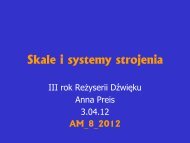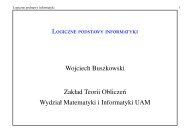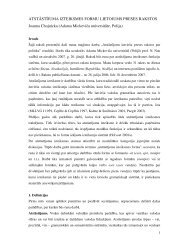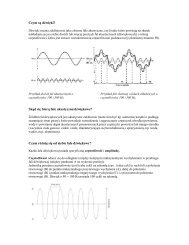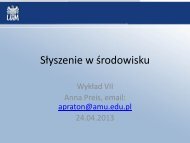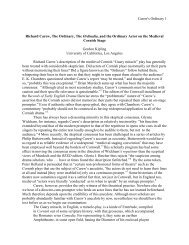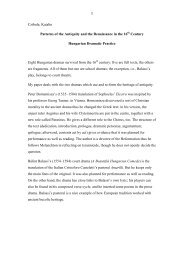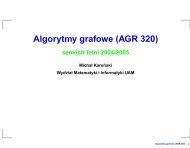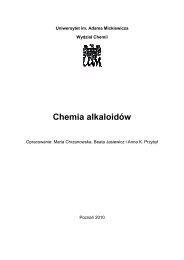Amir Weiner Getting to Know You
Amir Weiner Getting to Know You
Amir Weiner Getting to Know You
Create successful ePaper yourself
Turn your PDF publications into a flip-book with our unique Google optimized e-Paper software.
30 AMIR WEINER AND AIGI RAHI-TAMM<br />
of the investigations that were launched upon regaining terri<strong>to</strong>ry and the utter<br />
seriousness with which the commission members approached their task. 79<br />
The assembled information was put <strong>to</strong> immediate use as waves of arrests<br />
swept the recovered terri<strong>to</strong>ries and war crime trials dominated the local<br />
landscape for years <strong>to</strong> come. 80 In the Ukrainian Republic alone, between 1943<br />
and 1957 some 93,690 people were arrested and charged with collaboration<br />
with the Germans. Fifty-eight percent of the nearly 82,000 arrested in<br />
1946–52 came from the western provinces. 81 When it came <strong>to</strong> information<br />
gathering, even the calamity of the war presented an opening rather than a<br />
setback.<br />
The mass deportations from the western borderlands in the spring and<br />
summer of 1949, when over 125,000 people in the Baltic and the Moldavian<br />
republics were apprehended and exiled, were both a crowning achievement<br />
and public display of the system’s chronic problem. After a decade of relying<br />
almost solely on personnel imported from the Russian core and enduring<br />
violations of secrecy that often resulted in targets slipping out of its grip,<br />
Soviet surveillance had finally reversed these patterns. Attempts <strong>to</strong> indigenize<br />
the informant pool gathered momentum in the course of the struggle against<br />
nationalist guerillas. In mid-1945, the NKVD already registered over 11,000<br />
local agents and informants in western Ukraine. In Lithuania, it managed<br />
<strong>to</strong> increase the share of Lithuanians in its ranks from 25.3 percent in 1945<br />
<strong>to</strong> 41.1 percent in 1947. Numerous files on the liquidation of anti-Soviet<br />
partisans indicated the indispensable role of informants in the localities,<br />
where command of the indigenous language was a prerequisite. This headway,<br />
however, carried the steep price of having <strong>to</strong> rely on numerous unverified,<br />
unqualified, and unreliable informants of dual loyalty, who were recruited in<br />
haste under wartime and civil war circumstances and constituted an estimated<br />
60 percent of the surveillance apparatus in 1946. 82<br />
79 Sorokina, “People and Procedures,” 813, 823–24, 825 n. 88; Sanders, “Extraordinary<br />
Crimes in Ukraine,” 77. For typical compositions of these commissions in the <strong>to</strong>wn of Iv´e in<br />
the Molodechno region of Belarus, see GARF f. 7021, op. 89, d. 2; on Virumaa in Es<strong>to</strong>nia,<br />
see GARF f. 7021, op. 97, d. 15, l. 19; and on Horodok in the L´viv region, see Derzhavnyi<br />
arkhiv L´vivs´koi oblasti (DALO) f. 3, op. 1, spr. 279, ark. 1.<br />
80 Nathalie Moine, “La commission d’enquête soviétique sur les crimes de guerre Nazis: Entre<br />
reconquête du terri<strong>to</strong>ire, écriture du récit de la guerre et usages justiciers,” Le mouvement social<br />
1, 2 (2008): 105–7.<br />
81 Tanja Penter, “Collaboration on Trial: New Source Material,” Slavic Review 64, 4 (2005):<br />
783 n. 2 and 789 n. 15.<br />
82 Burds, “Agentura,” 120; Truska, Sovietinis Saugumas Lietuvoje, 102, 108; For one of<br />
many detailed reports by informants that led <strong>to</strong> the arrest of nationalist guerrillas here in the<br />
Lithuanian county of Siauliai in November 1947, see LYA f. K-1, ap. 45, b. 1492, ll. 9–9a; and<br />
Chebrikov, Is<strong>to</strong>riia, 459–60.



